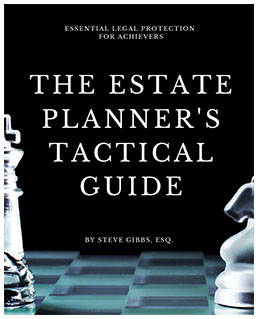Life Insurance Upgrades Without the Tax Bite
Unless you peruse the IRS tax code regularly, you may not be familiar with code sections 1035 or 1031. However, in the world of wealth building and asset protection, these little combinations of numbers get a lot of attention—and for good reason.
Simply put, these IRS code sections allow for the transfer of asset values without triggering capital gains taxes. This powerful benefit can make a world of difference when you’re looking to upgrade your financial protection strategy.
In today’s rapidly evolving insurance landscape, understanding how to leverage these provisions has never been more important. With rising interest rates, new product innovations, and shifting financial priorities, the 1035 exchange has become an essential tool in the financial planning toolkit.
What Is a 1035 Exchange and Why Should You Care?
A 1035 exchange allows a policy owner to transfer the cash value from one life insurance policy to another without facing tax consequences. Think of it as upgrading your financial vehicle while keeping all the tax benefits intact.
According to the latest LIMRA research, approximately 18% of permanent life insurance policyholders have executed a 1035 exchange in the past decade, with activity increasing by 23% between 2022-2024. The average cash value transfer has grown from $78,500 in 2023 to a substantial $92,700 in early 2025.
Why this surge in popularity? Three key factors:
- Rising interest rates offering better returns on newer policies
- Product innovations combining life insurance with long-term care benefits
- Digital transformation reducing exchange processing time from 45 to 21 days
Real Estate and Life Insurance: Surprising Parallels
It’s sometimes helpful to draw analogies between characteristics of real estate and life insurance as assets. The reasoning goes something like this…
Real estate often requires a fairly steep down payment and is costly in the early years of ownership but can deliver big returns in the long run. It offers income tax-advantaged cash flow, numerous tax advantages, builds equity that can serve as collateral for loans, and ultimately builds wealth.
You may or may not be familiar with these characteristics of real estate. Yet, you should know that you can seamlessly substitute “permanent life insurance” for “real estate” in all of the above respects. Whole life and universal life insurance embody many of these same characteristics.
Just as the IRS allows real estate investors to use a 1031 exchange to transfer equity from one property to another “like-kind” asset, the 1035 exchange allows policy owners to transfer cash value between insurance policies without tax penalties.
The Anderson Family Business Case Study: Maximizing a 1035 Exchange
To understand the real-world impact of 1035 exchanges, consider the case of Robert Anderson, a 62-year-old manufacturing business owner.
Robert had a successful business valued at $4.2 million but was carrying an outdated universal life policy purchased in 2001. The policy had accumulated $780,000 in cash value but came with significant challenges:
- A modest guaranteed interest rate of only 2.5%
- Annual premiums that had increased to $32,000 from the original $24,000
- A carrier whose financial strength rating had declined from A+ to B+
- Coverage insufficient for the current business valuation
- An outstanding policy loan of $120,000 accruing interest at 5.5%
The Solution: A Strategic 1035 Exchange
Working with his insurance advisor, Robert implemented a comprehensive 1035 exchange strategy:
- Assessment Phase (January-February 2024)
- Conducted a comprehensive review of the existing policy
- Analyzed the tax basis ($650,000 in total premiums paid)
- Updated the business valuation to determine appropriate coverage levels
- Strategic Planning (March 2024)
- Developed a loan repayment strategy using business cash reserves
- Selected a new carrier based on financial stability and product features
- Chose a hybrid policy with integrated long-term care benefits
- Execution (April-May 2024)
- Repaid the $120,000 policy loan
- Completed the 1035 exchange paperwork
- Transferred $660,000 in cash value to the new policy
- Increased the death benefit to $3.8 million
The Results: Quantifiable Benefits
The strategic 1035 exchange delivered impressive results for Robert:
- Tax savings of $92,400 by avoiding capital gains on $130,000 growth over basis
- Annual premium reduction of 22% (from $32,000 to $25,000)
- Improved guaranteed interest rate from 2.5% to 3.75%
- Added $500,000 in long-term care protection
- Better alignment with business succession plan
- Elimination of loan interest expense, saving $6,600 annually
The entire implementation took 110 days from initial consultation to policy issuance—a timeline that would have been nearly twice as long just a few years ago before digital processing improvements.
THE ULTIMATE FREE DOWNLOAD
The Estate Planners Tactical Guide
Essential Legal Protection for Achievers

6 Key Considerations Before Initiating a 1035 Exchange
While 1035 exchanges offer significant benefits, they require careful planning. Here are six critical factors to evaluate before proceeding:
1. Outstanding Policy Loans
If there’s an unpaid policy loan on your current life insurance policy, it must be addressed before the 1035 exchange. You have two primary options:
- Pay back the loan (if funds are available)
- “Reduce” the policy prior to the 1035 exchange
If you plan on reducing your policy, consider these important precautions:
- The reduction can’t exceed the tax basis (the amount invested) in the original policy or a tax will follow
- The original policy reduction should be completed well in advance of the exchange to avoid a “step transaction”
- There may be a “forced out gain” for recent policies if within the first 15 years
- If the new policy is denied, it may be difficult to restore the original coverage
A loan rescue may be possible if your new policy allows transferring the existing loan. If permitted, the loan could then be paid off with no recognition of taxable gain.
2. Policy Ownership Changes
Changes in ownership are NOT allowed with 1035 exchanges. Attempting to change ownership during an exchange will typically result in income tax AND/OR gift tax consequences.
If a change in ownership is desired, this should be accomplished prior to the exchange, with careful consideration of the same precautions mentioned above.
3. Changes to the Insured
Similar to ownership changes, modifications to the insured person are NOT permitted as this would essentially be surrendering an old policy and issuing a new one to a different insured.
4. Second-to-Die Policy Considerations
Many people don’t realize that a second-to-die life insurance policy converts to a single life policy for 1035 exchange purposes upon the passing of a spouse. This means a surviving spouse can roll that policy into a new one if conditions are favorable.
5. New Policy Loan Timing
If you anticipate needing a loan from your new policy soon after the exchange, proceed with caution. Taking a loan too quickly may cause the transaction to be deemed a “step transaction” by the IRS.
A good rule of thumb is to wait at least 6 months after completing the 1035 exchange before taking additional policy loans. This timing consideration is ultimately a common-sense test based on your specific circumstances.
6. Modified Endowment Contract (MEC) Status
If your current policy is NOT a Modified Endowment Contract (MEC), your new policy should maintain that status if it meets the 7-pay rule requirements. However, if your original policy is a MEC, the exchanged policy will also be deemed a MEC—an especially important consideration for older “grandfathered” MEC policies.
The Growing Popularity of Partial 1035 Exchanges
One of the most significant trends in the 1035 exchange landscape is the increasing use of partial exchanges. This strategy allows policyholders to transfer only a portion of their cash value to a new policy, effectively creating a diversified insurance portfolio.
According to recent data, partial exchanges have grown by 42% since 2023, with the average partial exchange transferring approximately 60% of the original policy’s cash value.
The primary benefits of this approach include:
- Diversification across multiple carriers
- Ability to access different policy features and benefits
- Reduction of carrier-specific risk
- Creation of policies with different objectives (death benefit focus vs. cash accumulation)
- Preservation of favorable provisions in older policies while accessing new features
Example: The Partial Exchange Strategy
Consider a policyholder with a $500,000 whole life policy with $200,000 in cash value. Rather than transferring the entire amount, they might execute a partial 1035 exchange of $120,000 to a new indexed universal life policy focused on cash accumulation, while maintaining the original whole life policy with reduced paid-up coverage.
This creates two complementary policies:
- A dividend whole life policy providing guaranteed death benefit and steady cash value growth
- An indexed universal life policy offering potential for higher returns tied to market performance
Tech Stuff That’s Making 1035 Exchanges Way Easier
Here is something interesting. If you tried doing a 1035 exchange even 5 years ago, you were in for a mountain of paperwork and weeks (sometimes months!) of waiting. But things have changed in a big way.
The Digital Revolution
Remember when everything was paper forms and fax machines? Those days are thankfully behind us. Most carriers have finally dragged themselves into the 21st century, and it’s making a world of difference.
I had a client last month who completed his entire exchange in just 24 days, from application to new policy issued. That would have been unheard of before! The carriers are using electronic signatures, online applications, and even some basic AI to verify policy details automatically.
Insurance companies have cut processing times in half. That’s great news for all of us who’ve sat around waiting for paperwork to process.
Comparing Policies (Without Losing Your Mind)
Another game-changer has been the new comparison tools. Back in the day, trying to compare different policies meant creating your own spreadsheets and hoping you didn’t miss something important.
Now there are tools that can lay everything out side-by-side, the guaranteed rates, the fees (which they always try to hide), historical performance, and even project different scenarios based on interest rate changes. It takes a lot of the guesswork out of deciding whether a 1035 exchange makes sense for you.
I still recommend working with someone who knows what they’re looking at, since these tools can sometimes miss the nuance of certain policy features, but they’re a huge step forward.
Blockchain and Other Fancy Tech
A few of the bigger carriers are experimenting with blockchain for policy verification. I’m not going to pretend to be a tech guru here, but the basic idea is creating a secure, unchangeable record of your policy details that makes transfers between companies much faster and more secure.
Is it necessary? Probably not. But if it shaves another week off the process and gives us better security, I’m all for it. The insurance industry isn’t exactly known for being on the cutting edge, so it’s refreshing to see some innovation happening.
The bottom line is that technology is finally making these exchanges less painful for everyone involved. What used to be a dreaded process can now be pretty straightforward if you’re working with the right people who understand the system.
Common FAQs About Life Insurance 1035 Exchanges
Will I lose my coverage during a 1035 exchange process?
No, your original policy remains in force until the new policy is officially issued and the exchange is complete. There is no gap in coverage during a properly executed 1035 exchange.
How long does a typical 1035 exchange take to complete?
The industry average is now around 30 days, down from 45-60 days just a few years ago. However, complex cases involving medical underwriting or large policy values may take longer. Working with an experienced advisor can help streamline the process.
Can I exchange multiple policies into a single new policy?
Yes, the IRS allows consolidating multiple policies into one through a 1035 exchange, provided all other requirements are met. This can be an effective strategy for simplifying your insurance portfolio.
What happens if my health has declined since my original policy?
This is one of the primary concerns with 1035 exchanges. If your health has deteriorated, you may not qualify for a new policy or may face higher premiums. Some carriers offer guaranteed issue 1035 exchanges within certain parameters, or you might consider a partial exchange to maintain some of the original coverage.
Can I do a partial 1035 exchange?
Yes, partial 1035 exchanges have become increasingly popular. They allow you to transfer only a portion of your cash value to a new policy while maintaining some coverage under the original policy. This approach provides diversification benefits and can mitigate health-related underwriting concerns.
The Future of Life Insurance 1035 Exchanges
A couple trends are helping to shape the 1035 exchange landscape in 2025 and beyond:
Hybrid Product Innovation
The fastest-growing destination for 1035 exchanges is hybrid policies combining:
- Traditional life insurance protection
- Long-term care benefits
- Chronic illness riders
- Return of premium features
- Guaranteed income provisions
Integration with Comprehensive Financial Planning
Rather than viewing 1035 exchanges as isolated transactions, forward-thinking advisors are incorporating them into holistic planning strategies that consider:
- Retirement income planning
- Legacy and estate considerations
- Business succession strategies
- Tax optimization opportunities
- Long-term care funding
Taking the Next Step: Is a 1035 Exchange Right for You?
While 1035 exchanges offer powerful benefits, they’re not suitable for every situation. From experience, ideal candidates typically have:
- Permanent life insurance policies with significant cash value
- Policies that are at least 10-15 years old
- Carriers with declining financial strength ratings
- Changed financial goals or circumstances
- Policies with underperforming interest rates or high fees
- Estate or business planning needs that have evolved
A thorough policy review with an experienced advanced planning professional is a great first step. Top tier analysis should include:
- Evaluation of your current policy’s performance and features
- Comparison with contemporary marketplace alternatives
- Assessment of potential tax implications
- Analysis of your current health and insurability
- Integration with your broader financial planning goals
Conclusion: Maximizing Your Life Insurance Investment
Life insurance 1035 exchanges represent one of the most valuable yet underutilized provisions in the tax code. By allowing policy owners to upgrade their coverage without tax penalties, 1035 exchanges can enhance protection, improve performance, and align coverage with changing needs.
The key is approaching these transactions strategically, with a clear understanding of the benefits, limitations, and process requirements. With proper guidance, a 1035 exchange can transform an underperforming policy into a powerful financial asset that better serves your current and future needs.
Whether you’re a business owner seeking better alignment with succession plans, or simply a policyholder looking for improved returns in today’s higher interest rate environment, exploring the potential of a 1035 exchange could unlock significant value in your financial portfolio.
Ready to Explore if a 1035 Exchange Is Right for You?
Don’t leave money on the table or miss opportunities to enhance your life insurance strategy. Our team of specialists has guided hundreds of clients through successful 1035 exchanges, helping them save on taxes while upgrading their coverage.
“I originally asked for an illustration for a 1035 exchange and received three. When I expressed interest in one of the ‘extras,’ I received two more options, and a variant of one of those was the one I eventually selected. Nothing was rushed. Nothing was forced. Nothing was cookie cutter. The follow-up after the policy was in place ensured I understood how the policy worked, when I should request additional assistance, etc. Zero reservations about recommending.”
— DGB, Verified Client Review, January 2025
During your complimentary consultation, we’ll:
- ✓ Review your existing policy details
- ✓ Identify potential tax savings opportunities
- ✓ Evaluate suitable policy alternatives
- ✓ Create a customized exchange strategy
- ✓ Outline the step-by-step implementation process
Our Pro Client Guide specialists have extensive experience with complex 1035 exchanges, including business succession planning, policy loan challenges, and partial exchange strategies.
Additional FAQs
What are the key differences between a 1035 exchange and simply surrendering my old policy to buy a new one?
A 1035 exchange preserves the tax-deferred status of your policy growth, while surrendering would trigger immediate taxation on any gain above your cost basis. Additionally, a 1035 exchange maintains your policy’s tax basis for future reference, potentially providing more favorable tax treatment if you ever need to access cash value.
Are there any time limits or deadlines I need to be aware of when executing a 1035 exchange?
Unlike 1031 real estate exchanges which have strict 45/180-day timelines, 1035 exchanges don’t have federally mandated deadlines. However, most carriers will only hold an application open for 60-90 days, and medical underwriting results typically expire after 6 months. It’s best to have your new policy approved before initiating the surrender of your existing policy.
Have a question? Please leave us a comment below!
Remember that while this article provides comprehensive information on 1035 exchanges, individual circumstances vary. Always consult with a qualified professional before initiating a policy exchange.






13 comments
Jerry Randall
My Irrevocable life ins trust owns a $100,000 policy on my life. I have paid $30,000
premiums in past years & filed annual guft tax returns, The cash vaue is &50,000. If I
do a 1035 exchange within this trust to a Survivorship policy insuring my wife and me , do I need to file a gift tax return as to the $20,000 gain in cash value? Thanks
SJG
Hi Jerry, I’d like to help yet tax questions absolutely lend themselves to a consultation with your trusted advisor – too many ways to get it wrong relying on blog discussions.
Best, Steve Gibbs for I&E
Steven Gibbs is a licensed insurance agent, and the following agent
license numbers of Steven Gibbs are provided as required by state law:
Resident License; AZ agent #17508301,
Non-resident Licenses: TX agent #2273189, CA agent #0K10610,
LA agent #769583, MA agent #2049963, MN agent #40563357,
UT agent #655544.
Kirk Stanley
I have a universal life policy. Current cash value approx. 750k with a 2.3 million death benefit. The contact period has been fulfilled. So there are no additional surrender costs. I’d like to get out of the policy but don’t want to incur the taxes on the gains. Currently about 260k. I don’t need the high coverage or the escalating premiums that are incurring. Also the company has lowered the dividend cap. I do have a 200k loan against the policy bringing face value to approximately 950k. Can I 1035 the policy into something with a lower death benefit and premiums and a higher dividend payout without triggering a tax event or it becoming a MEC?
Insurance&Estates
Hello Kirk and thanks for connecting. Generally speaking, a 1035 could be used for the purpose you’re describing. To see how this would work for you specifically, an expert would need to look at your existing policy and discuss solutions for an exchange. To get started, I recommend that you connect with our high cash value life expert Barry Brooksby by emailing him at barry@insuranceandestates.com.
I will let him know to expect your email.
Best, Steve Gibbs for I&E
Troy Silcox
Can I combine the two (1031 & 1035) and use real estate proceeds to purchase a life insurance policy?
Insurance&Estates
Hello Troy and thanks for commenting. I’m not aware of an ability to exchange one asset for another, though I’ll give you some creativity points here. I think asking your CPA about this is the best route to be sure.
Best, Steve Gibbs for I&E
alan don
I currently have a whole life with about $20k in cash value. I’d like to do 1035 to a new UL which will cost about 9k/yr. When is the best time to do the 1035 exchange, and will it cause the new UL to be a MEC? thanks in advance.
Murali I.
I currently participate in our company sponsored Group Universal Life Insurance w/ AD&D rider and cash accumulation option. So far this is working out great. I am looking for additional riders like Long Term Care expense, zero sum loan, minimum guaranteed return and growth options provided similar to Indexed Universal Life. I am very familiar with 1031 exchange but didn’t know 1035 option for insurance. Will I be able to utilize 1035 exchange in my situation and more details are welcome.
Insurance&Estates
Hello Murali,
Thanks for your interest and question. I can answer generally that a 1035 exchange is for any “like-kind” policy, so you should be able to utilize for other life insurance policies. That said, it’d be tough to address your questions further without some more details. I would like to connect you with Jason Herring who has an extensive background in universal life policies. Let me know if you’d like him to connect with you to answer your questions in more detail. If so , please e-mail me your best phone contact information at steve@insuranceandestates.com.
Best to you.
Steve Gibbs
Alma G.
Can a Unisex Variable Appreciable Life Guaranteed Qualified be 1035 exchanged into another New NON-Qualified Life policy? or it should go into an Annuity, and if so, the annuity has to be Qualified or Non-Qualified??
Insurance&Estates
Hello Alma,
We forwarded your request to Jason Herring, one of our Pro Client Guides, to reach out concerning your questions. Thanks for checking in.
Best,
I&E
Joan English
Is it possible to exchange a Level Benefit Term Life Policy for a Whole life policy?
My term life policy will expire in about 2 years and I hate to see all that money that I paid into it amount to zero. Thank you.
Insurance&Estates
Joan,
Thank you for the inquiry. We will reach out to you shortly via the contact info you provided.
Sincerely,
I&E